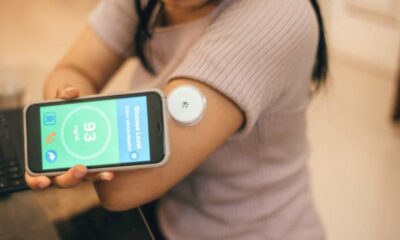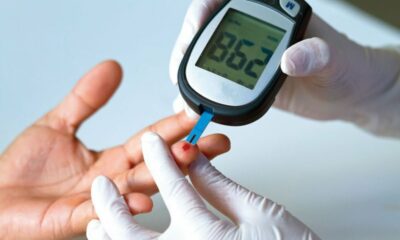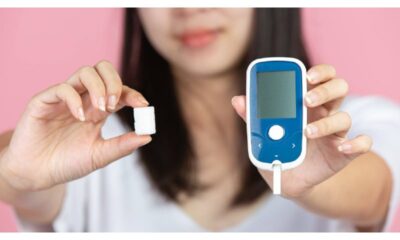Type 1 diabetes shouldn’t hold you back from exploring the world! With careful planning and preparation, you can navigate any adventure while keeping your blood sugar in check. This guide equips you with essential travel tips to ensure a smooth, enjoyable, and diabetic-friendly journey.
Planning and Preparation: Your Pre-Travel Checklist
- Doctor’s Consultation: Schedule a pre-travel checkup with your doctor at least 4-6 weeks before departure. Discuss your itinerary, potential risks, medication adjustments, and refill needs. Obtain a doctor’s note outlining your condition and medication requirements, translated if necessary.
- Research Destination Healthcare: Familiarize yourself with available medical resources at your destination. Locate pharmacies, hospitals, and clinics specializing in diabetes care. Pack a diabetes emergency contact card with your doctor’s information and preferred language in case of emergencies.
- Gather Supplies: Pack enough diabetes supplies for the entire trip, with a 20-30% buffer to account for delays or unexpected situations. This includes insulin, syringes or pump cartridges, test strips, a glucometer, ketone testing supplies, alcohol wipes, lancets, and sharps containers.
- Refill Prescriptions: Ensure you have enough refills for all medications, including insulin, before leaving. Consider requesting a temporary increase in refills if needed for longer trips. Explore options for obtaining refills at your destination, if possible.
- Travel Insurance: Invest in travel insurance that covers pre-existing medical conditions like diabetes. This provides peace of mind knowing you’re financially protected in case of medical emergencies.
- Inform Airline/Travel Company: Notify the airline of your diabetes and any specific needs, such as carrying insulin and checking blood sugar during the flight. Pack a doctor’s note for insulin storage requests. Some airlines may require advanced notification for specific medical equipment.
Packing Like a Pro: Essentials for Your Diabetic Travel Kit
- Durable Bag: Invest in a sturdy, well-insulated bag or cooler to carry insulin and other supplies. Consider a medical alert bag for easy identification of your condition.
- Temperature Control: Pack cooling pouches or gels to maintain insulin within safe temperature ranges, especially in hot climates.
- Organization is Key: Use a divided bag or organizers to keep your supplies readily accessible and avoid last-minute searches.
- Snacks on the Go: Pack a variety of diabetic-friendly snacks to manage blood sugar fluctuations. Choose options with slow-digesting carbohydrates, protein, and healthy fats to maintain sustained energy.
- Blood Sugar Testing Essentials: Pack a glucometer, extra test strips, lancets, and alcohol wipes for convenient blood sugar monitoring.
- Documentation: Keep copies of prescriptions, doctor’s notes, and medical insurance information readily available. Consider translating vital medical information into the local language if necessary.
Air Travel Hacks: Navigating the Skies with Ease
- Separate Your Supplies: Pack essential diabetes supplies in your carry-on luggage to ensure immediate access. Declare your insulin and other diabetic supplies to security personnel and be prepared to show your doctor’s note if needed.
- Stay Hydrated: Air travel can be dehydrating, leading to blood sugar fluctuations. Drink plenty of water throughout the flight and avoid sugary beverages.
- Manage Time Zones: Adjust your insulin schedule as needed to account for time zone changes. Discuss adjustments with your doctor beforehand.
- Be Active: Get up and move around the cabin periodically to improve circulation and manage blood sugar levels. Simple stretches or walking in the aisle can be helpful.
Hitting the Road: Tips for Land and Sea Travel
- Plan for Delays: Pack extra snacks and supplies in case of unexpected travel delays on road trips or train journeys.
- Car Considerations: Keep insulin and other supplies within reach while traveling by car. Avoid storing them in extreme hot or cold compartments.
- Cruise Ship Adventures: Inform the cruise line of your diabetes beforehand. Check if onboard medical staff are trained in diabetes management. Pack enough supplies for the entire cruise duration.
Exploring Your Destination: Embracing New Cultures
- Research Local Cuisine: Plan meals in advance by researching diabetic-friendly options at restaurants and grocery stores. Pack familiar snacks if local options are limited.
- Be Culturally Sensitive: Learn basic diabetic-related phrases in the local language to facilitate communication. Consider carrying a medical ID card translated into the local language.
- Maintain Activity Levels: Incorporate physical activity into your travel plans while considering your usual exercise routine and adjusting for new environments. Be aware of potential blood sugar effects due to increased activity levels.
- Sun Safety and Hydration: Be mindful of sun exposure, especially when visiting hot climates. Dehydration can impact blood sugar control. Apply sunscreen regularly, wear protective clothing, and stay hydrated throughout the day.
- Foot Care: Proper foot care is crucial for individuals with diabetes. Pack comfortable shoes and inspect your feet daily for any blisters, cuts, or irritations.
Managing Blood Sugar While Traveling
- Monitor Blood Sugar Regularly: Maintain your usual blood sugar monitoring routine, even when on vacation. Adjust the frequency of monitoring based on activity levels, unfamiliar food choices, and time zone changes.
- Be Flexible: Travel can disrupt routines. Be prepared to adjust your insulin dosage or meal plan as needed, based on your blood sugar readings and activity levels.
- Communicate with Your Doctor: Stay connected with your doctor remotely if possible. Consider scheduling telehealth consultations to discuss any concerns or medication adjustments during your trip.
Unexpected Situations: Maintaining Composure
- Lost Supplies: Pack a backup kit with essential supplies to address potential loss or damage to your primary kit.
- Medical Emergencies: Be aware of emergency medical resources at your destination. Familiarize yourself with local emergency numbers and keep a diabetes emergency contact card with you at all times.
- Low Blood Sugar: Always carry readily available glucose tablets or fast-acting sugar sources to treat low blood sugar episodes. Educate travel companions on recognizing symptoms and assisting with treatment.
Returning Home: A Smooth Transition
- Replenish Supplies: Restock your diabetes supplies upon returning home to avoid running low before your next refill.
- Schedule a Checkup: Schedule a follow-up appointment with your doctor upon your return to discuss your travel experiences and any blood sugar management concerns.
Conclusion
Traveling with Type 1 Diabetes requires preparation and planning, but it doesn’t have to limit your adventures. By following these tips and working closely with your healthcare team, you can confidently embark on exciting journeys while maintaining optimal blood sugar control. Remember, with a positive attitude and proactive approach, you can conquer the world with diabetes!

 Diabetology2 weeks ago
Diabetology2 weeks ago
 Diabetology1 week ago
Diabetology1 week ago
 Diabetology5 days ago
Diabetology5 days ago
 Diabetology7 days ago
Diabetology7 days ago
 Diabetology7 days ago
Diabetology7 days ago
 Diabetology3 days ago
Diabetology3 days ago
 Diabetology3 days ago
Diabetology3 days ago
 Diabetology1 day ago
Diabetology1 day ago














